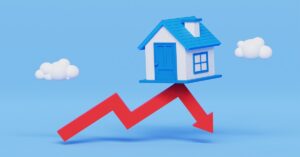There’s a big change coming next year for the calculation of adjustable-rate mortgages (ARMs). Sometime in 2021, a long-used interest rate benchmark — the London Interbank Offered Rate, or LIBOR — is expected to fall out of use.
LIBOR is established daily via a survey of international banks that report what they will charge other banks to borrow funds overnight. The average of these figures, after eliminating the numbers in the highest and lowest quartiles, becomes the rate for that day. For the past 30 years, LIBOR has been the world’s most used benchmark. The rates for many financial products, including variable-rate mortgages and credit cards, are tied to it. Next year, however, LIBOR is expected to all but disappear.
The reasons for LIBOR’s demise are many, but they trace their roots to the days following the previous financial meltdown. In 2012, it was discovered that certain banks were falsely reporting their rates in a move to rig LIBOR and profit on derivative trades. Efforts to find a replacement benchmark based on actual overnight transactions have been ongoing since 2014. LIBOR’s phaseout is expected to arrive in 2021, although a specific date is unclear and it’s unknown precisely what will replace it.
The mortgage industry has a significant stake in what happens. According to CoreLogic, about $1.2 trillion in adjustable-rate mortgage balances are tied to LIBOR. This includes the reverse mortgages taken out by older Americans and retirees that are guaranteed by the U.S. Department of Housing and Urban Development (HUD).
The Mortgage Bankers Association (MBA) doesn’t anticipate a significant disruption but several unknowns remain. “It’s a manageable process, but it certainly does entail making some changes to your systems, to your models,” says Dan Fichtler, MBA’s associate vice president of housing finance policy.
The main dilemma associated with phasing out LIBOR is dealing with the existing adjustable-rate mortgages tied to the rate, Fichtler says. One of the primary issues is how to adjust the contractual language in the loans to specify what will replace LIBOR. Another issue is that the leading replacement candidate for LIBOR — the Secured Overnight Financing Rate, or SOFR — is calculated in a different way and doesn’t exactly match or correlate with LIBOR.
“If the new index you’re using isn’t exactly correlated with LIBOR, it might not move in exactly the way LIBOR does,” Fichtler says. “You have to get your arms around understanding what it means to have new products that are indexed to something other than LIBOR.”
CoreLogic chief economist Frank Nothaft says that newly originated conforming ARMs will likely be sold seamlessly to Fannie Mae and Freddie Mac using the new benchmark rate. Existing ARMs, however, could be problematic.
“You need a replacement,” Nothaft says. “How do servicers handle that? How do you handle borrowers who don’t follow all the different ARM indexes and all that? How do you prevent them from feeling like, ‘Hey, wait, you’re pulling a fast one on me’?”
Nothaft also believes the change will be a pain point for HUD’s home equity conversion mortgage (HECM) program.
“Most outstanding HECMs that are adjustable rate are indexed to LIBOR,” Nothaft says. “I don’t think HUD, when they approved the use of LIBOR, ever envisioned a day where the index goes away. The interest rate is used to determine how the HECM loan liability changes over time. If you change that on the senior borrower who took out a HECM a few years ago and, suddenly, you have changed the rate at which that loan balance is rising, that could be a major issue for senior citizens who have a HECM loan.”
Our hope is that all the work that’s being done to facilitate this transition will ensure that originators can continue to feel comfortable offering adjustable-rate loans.
Fichtler says it is unlikely that the cost of adjustable-rate mortgages will rise, but some key operational features will likely change. The typical ARM resets once a year after its initial fixed-rate period ends. Once LIBOR disappears, this reset would likely occur every six months, Fichtler says. Also, the adjustable rate can rise by a maximum of 2% in a calendar year. Fichtler says that if the adjustable rate is reset every six months, the increase in the adjusted rate would be capped at 1% every six months.
As lenders adjust to the end of LIBOR, it is possible that fewer ARMs will be originated initially, Fichtler says. But it is not yet clear if lenders will make ARMs less available to borrowers during the transition.
“It’s important to know that adjustable-rate mortgages make up a pretty small share of the overall reach of the residential mortgage market today,” Fichtler says. “Our hope is that all the work that’s being done to facilitate this transition will ensure that originators can continue to feel comfortable offering adjustable-rate loans but, you know, there is some element of it that has yet to be determined.”
Author
-

Victor Whitman is a contributing writer for Scotsman Guide and a former editor of the publication’s commercial magazine.
View all posts





